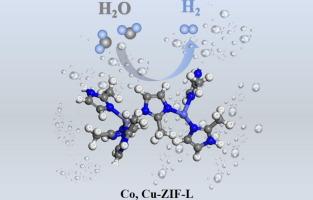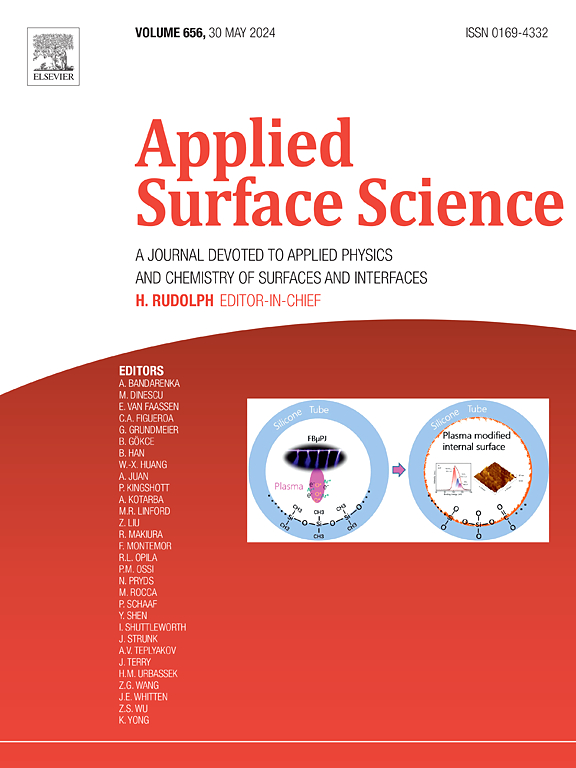通过在 ZIF-L 中引入双金属原子来控制微环境,从而提高氢进化活性
IF 6.3
2区 材料科学
Q2 CHEMISTRY, PHYSICAL
引用次数: 0
摘要
在本研究中,我们采用一种简便的水热反应方法,通过注入双金属原子(特别是 Co 和 Cu)来提高 ZIF-L 的电催化性能。优化后的 Co、Cu-ZIF-L 复合材料在碱性介质中 10 mA cm-2 和 50 mA cm-2 条件下的过电位分别为 70 mV 和 145 mV,显示出卓越的氢进化活性。Co、Cu-ZIF-L 复合材料还显示出卓越的氢进化循环稳定性(∼ 90 h)。电催化性能的提高归功于双金属原子,它们不仅引入了丰富的活性位点,还通过调节催化微环境改善了结构的完整性和催化动力学。密度泛函理论计算进一步证明,在 ZIF-L 中注入 Co 原子和 Cu 原子可优化氢中间产物的自由吸附能,从而加速氢氧还原动力学。这项研究证实,向 MOFs 中注入高导电性金属原子以调节催化微环境是显著提高 MOFs 电催化活性的潜在途径。本文章由计算机程序翻译,如有差异,请以英文原文为准。

Controlling the microenvironment by introducing dual metal atoms into ZIF-L to enhance hydrogen evolution activity
In this study, we introduce an efficient strategy to enhance the electrocatalytic performance of ZIF-L by injecting dual metal atoms, specifically Co and Cu, using a facile hydrothermal reaction method. The optimized Co,Cu-ZIF-L composites showed exceptional hydrogen evolution activities with overpotentials of 70 and 145 mV under 10 and 50 mA cm−2 in alkaline media. The Co,Cu-ZIF-L composites also displayed excellent cycling stability (∼ 90 h) for hydrogen evolution. The enhanced electrocatalytic performance is attributed to the dual metal atoms, which not only introduce abundant active sites but also improve the structural integrity and catalytic kinetics by regulating the catalytic microenvironment. Density functional theory calculations further support that the injection of Co and Cu atoms into the ZIF-L optimizes the free adsorption energy of hydrogen intermediates, accelerating HER kinetics. This work confirms that injecting highly conductive metal atom into MOFs to regulate the catalytic microenvironment is a potential route to significantly increase the electrocatalytic activity of MOFs.
求助全文
通过发布文献求助,成功后即可免费获取论文全文。
去求助
来源期刊

Applied Surface Science
工程技术-材料科学:膜
CiteScore
12.50
自引率
7.50%
发文量
3393
审稿时长
67 days
期刊介绍:
Applied Surface Science covers topics contributing to a better understanding of surfaces, interfaces, nanostructures and their applications. The journal is concerned with scientific research on the atomic and molecular level of material properties determined with specific surface analytical techniques and/or computational methods, as well as the processing of such structures.
 求助内容:
求助内容: 应助结果提醒方式:
应助结果提醒方式:


